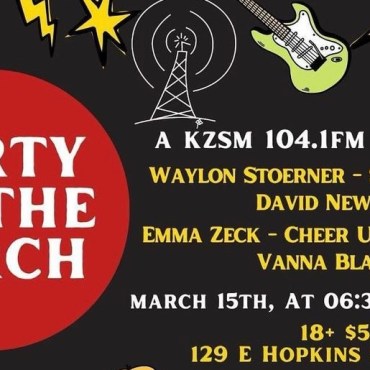Listeners:
Top listeners:
-
play_arrow
KTSW 89.9

By Jernice Kelley
Web Content Contributor
There has been a wave of research made regarding if and how color impacts the human experience.
While most people may agree that color has some general impact on how we perceive and interpret different experiences, there is still a debate on whether color psychology is legitimate.
In some research, it had been shown that red is typically associated with danger, aggressiveness or violence; all of these things are negative attributes. However, in other cultures red may be perceived as exciting, energizing, warm or even provocative.
So, how do these non-universal perceptions play into how we think and feel about things in our life? Well, it affects us in tremendous ways and advertising is the clearest way to see this.
Marketers have effectively used the color theory to set a mood, invoke a psychological response or rouse people to take action. Researchers found that up to 90% of snap judgments made about products can be based on color alone (depending on the product).
Color psychology can help build up a brand and increase its relatability, just take into account Mcdonalds, Starbucks or Coca-Cola.
Despite this finding, the color theory is not always clear cut. In terms of marketing this only works if the color “fits” the product being sold. No matter the color, it will always convey different feelings based on context.
As someone who is not a researcher or marketer, I can only attest to the color theory on personal experience. Also, I would only be able to attest to this from a western cultural standpoint.
Blues are associated with connotations like refreshing and cool, while greens are soothing, restorative and represent balance. White is associated with clean, pristine and airy feelings. In western culture, these are the normative associations to these colors.
From a contextual standpoint, this can be seen as the reason why hospitals incorporate whites, greens, and blues. They are calming, healing colors. This is a way in which color shapes how we experience our environment.
The color theory’s effect can be seen in our behavior. For example, when we get upset with someone we tend to seek out spaces that calm us down.
For some people that could mean going for a ride in the car and looking at the blue sky, sitting at a park with tall green grass or going into your favorite room in the house.
We tend to color-code our children’s genders with pinks and blues, to even picking out healthier food options based on the color of the label.
The psychology of color is something that could be deeply embedded in our culture, but where do these associations truly come from?
Featured image by Jernice Kelley.
Share this:
- Click to share on Twitter (Opens in new window)
- Click to share on Facebook (Opens in new window)
- Click to share on Tumblr (Opens in new window)
- Click to share on Pinterest (Opens in new window)
- Click to share on Reddit (Opens in new window)
- Click to email a link to a friend (Opens in new window)
- Click to print (Opens in new window)
Written by: ktsw admin
Associations color coded COLORS feelings green Jernice Kelley white
Similar posts
This Blog is Propery of KTSW



Post comments (0)